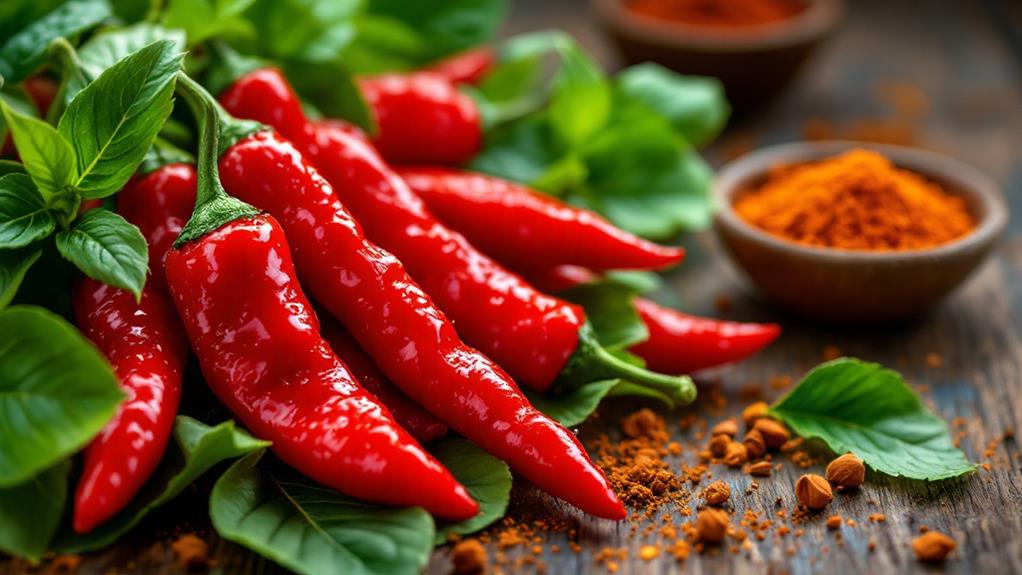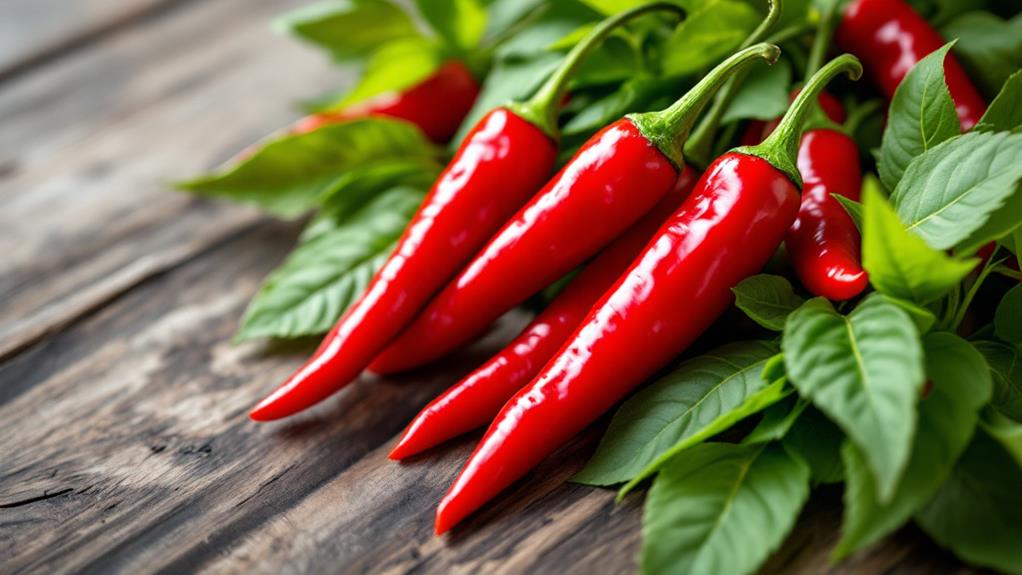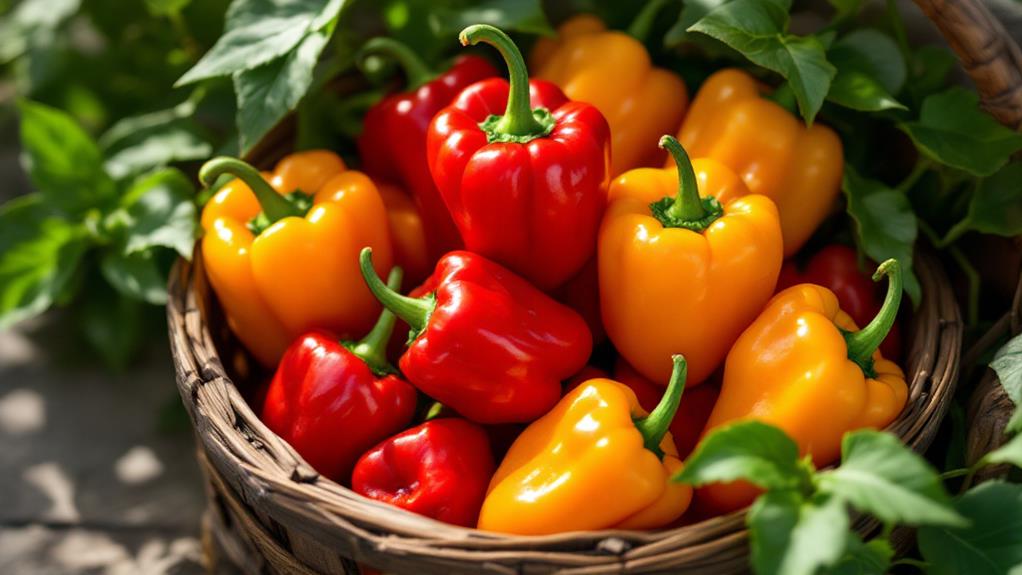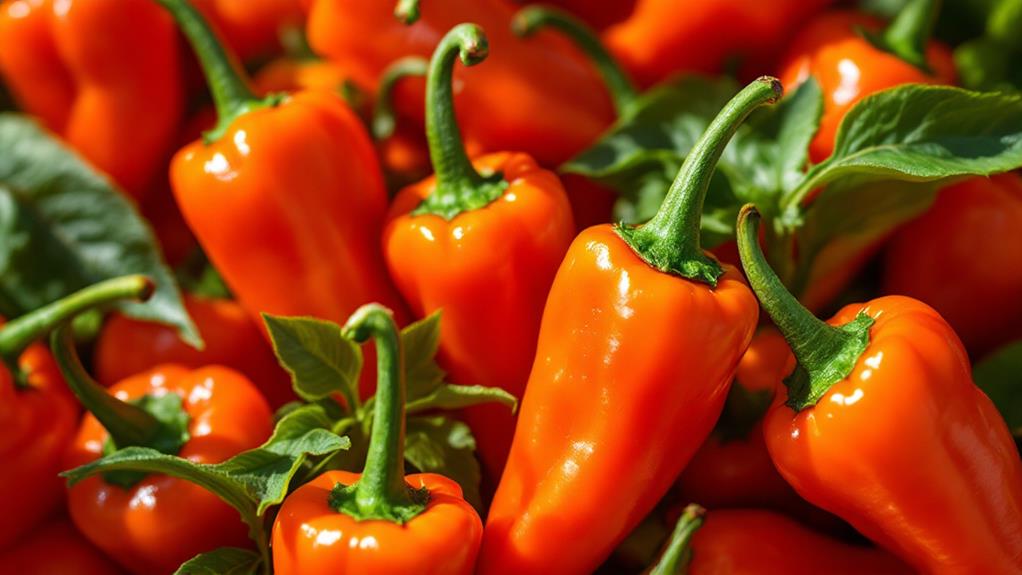Learn About the Rocoto Pepper: A Spicy Andean Delight
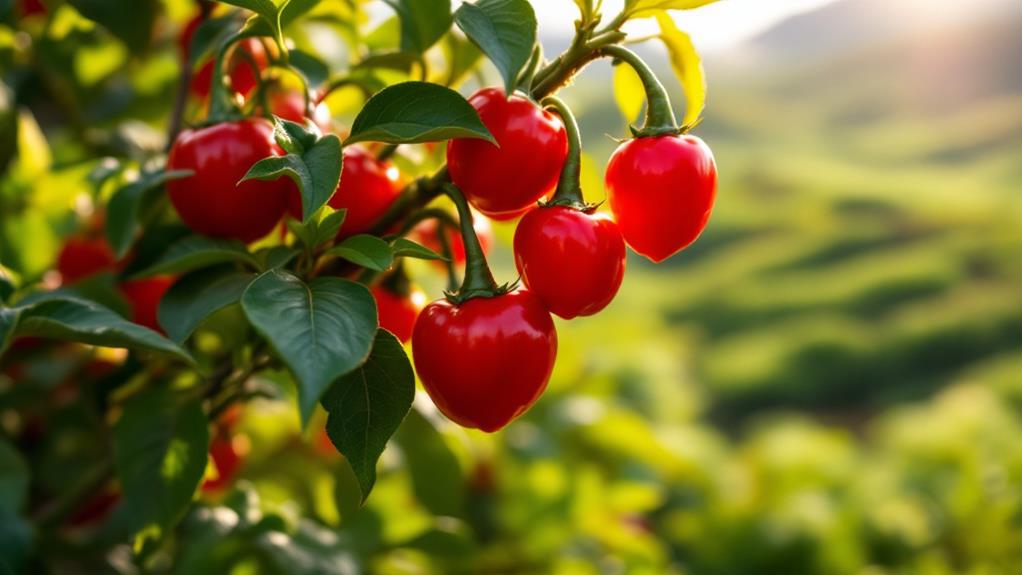
Discover the fiery allure of rocoto peppers, a cornerstone of Andean and Peruvian cuisine. Recognizable by their black seeds and lively hues, these peppers pack a punch with heat levels between 30,000 and 100,000 Scoville units. Their juicy, crunchy flesh combines the sweetness of bell peppers with a tangy tomato flavor, delivering habanero-like heat. Indulge in dishes like Rocoto Relleno or experiment with rocoto-based sauces to add a unique twist to your meals. When purchasing, choose firm, radiant peppers, and refrigerate them properly. As you travel further, you'll uncover cultural tales and culinary secrets tied to this spicy delight.
What Makes Rocoto Unique
The rocoto pepper stands out due to its unique characteristics, including black seeds and striking purple flowers. Unlike other chili peppers, its lively hues range from deep red to yellow and orange, resembling a bell pepper. But don't be fooled by its appearance; this pepper packs a punch, with heat levels reaching between 30,000 to 100,000 Scoville heat units. Originating over 5,000 years ago in the Andes of Peru, the rocoto pepper is a cornerstone of Andean and Peruvian cuisine, celebrated for its rich agricultural heritage.
What truly sets the rocoto apart is its flavor profile. You'll notice its fruity flavors combined with a slight sweetness, making it a flexible ingredient for different cooking applications. Its moist flesh is perfect for baking, roasting, and stuffing, providing endless culinary possibilities. In Andean cuisine, the rocoto pepper is often hailed as the "queen of hot peppers," embodying the region's culinary identity.
Whether you're exploring traditional Peruvian dishes or experimenting with new recipes, the rocoto pepper offers a unique blend of heat and flavor that improves the dining experience. Immerse yourself in its spicy allure, and you'll understand why it's cherished globally.
Culinary Uses and Recipes
Engage yourself in the culinary world of rocoto peppers, where these lively gems enrich dishes with their fiery kick and unique taste. In the Peruvian kitchen, rocoto peppers are indispensable, adding depth and heat to a variety of dishes. Plunge into delicious recipes like Rocoto Relleno, a traditional Peruvian food favorite. This dish features rocoto peppers stuffed with a savory blend of beef, onions, and ground peanuts, perfectly complemented by a creamy potato gratin. It's a must-try for anyone who loves spicy food.
If you're looking for a versatile condiment, try making Crema de Rocoto. This spicy sauce is ideal for drizzling over grilled meats or mixing into dips, showcasing the pepper's lively flavor profile. Rocoto peppers can also be enjoyed raw, providing a crunchy texture reminiscent of bell peppers, but with a substantial heat kick.
For those cautious about spice, consider boiling the peppers before use; it mellows their heat while preserving their delightful texture and flavor. Regardless of your exploration of traditional Peruvian food or experimenting with new culinary uses, rocoto peppers offer ingredients and reviews that emphasize their place among hot peppers in lively, spicy food traditions.
The Taste of Rocoto
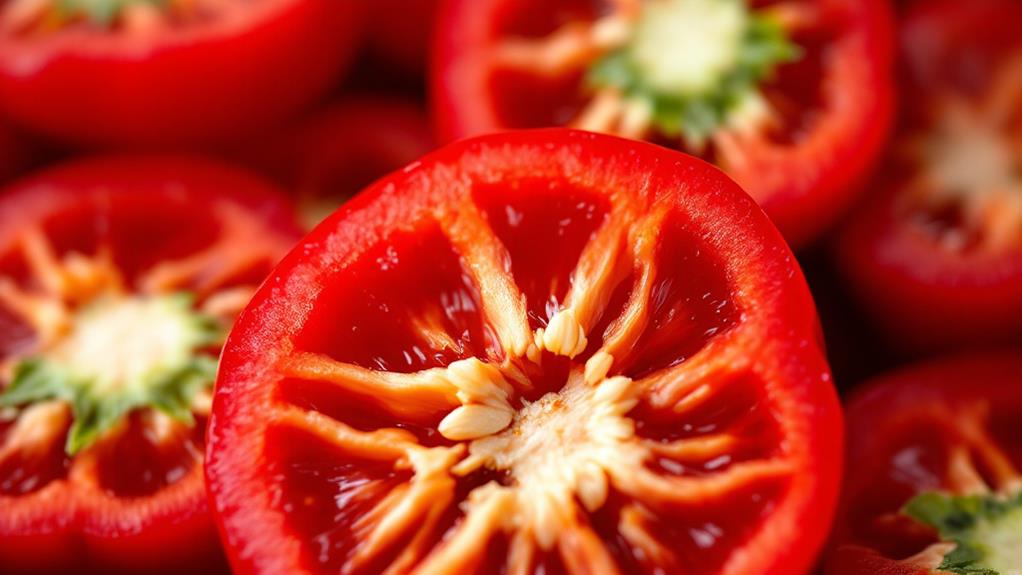
Rocoto peppers captivate not only with their fiery culinary potential but also with their intricate taste profile. These Peruvian gems offer complex flavors that merge the sweet undertones of bell pepper, the tang of tomato, and the heat reminiscent of habanero. With a Scoville scale heat range of 30,000 to 100,000 SHU, rocoto peppers deliver a substantial spicy kick, perfect for those who relish adding a bit of fire to their dishes.
The juicy, crunchy flesh of the rocoto makes it a flexible ingredient, enhancing its culinary adaptability. Regardless of whether you choose to enjoy them raw or cooked, these peppers bring a revitalizing texture that complements a wide range of dishes. Their rich spice is beautifully balanced by fresh notes, making them an ideal enhancement to seafood and grilled meats. Imagine the pepper's heat cutting through the richness of a salmon filet or adding zest to a perfectly seared steak.
Beyond proteins, rocoto peppers can raise your dips and salsas, offering a unique twist to traditional recipes. Their ability to pair with diverse ingredients allows you to investigate endless culinary possibilities and enjoy their lively, spicy essence.
Buying and Storing Tips
When searching for fresh rocoto peppers, you'll want to focus on finding lively, firm specimens to guarantee maximum flavor and quality. Since they aren't commonly found in grocery stores, it's essential to store them properly once you have them. Refrigerate your rocoto peppers in a breathable container to prevent moisture buildup and slow down ripening, preserving their colorful flavor.
If fresh rocotos are hard to come by, consider using rocoto paste. Brands like Belmont, Incas Food, and Doña Isabel offer this paste, which is a convenient alternative with a long shelf life when sealed properly. Once opened, store the paste in a cool place away from direct heat, and you'll have months to incorporate it into your favorite recipes.
For those interested in home gardening, purchasing seeds from reputable suppliers is key to cultivating healthy plants. Rocoto peppers need specific growing conditions, so make sure you're prepared to meet those for a thriving garden.
Dried and powdered rocoto forms are also available in specialty stores or online. These provide a convenient way to add the pepper's unique heat and flavor to dishes without needing fresh peppers on hand.
Cultural Importance
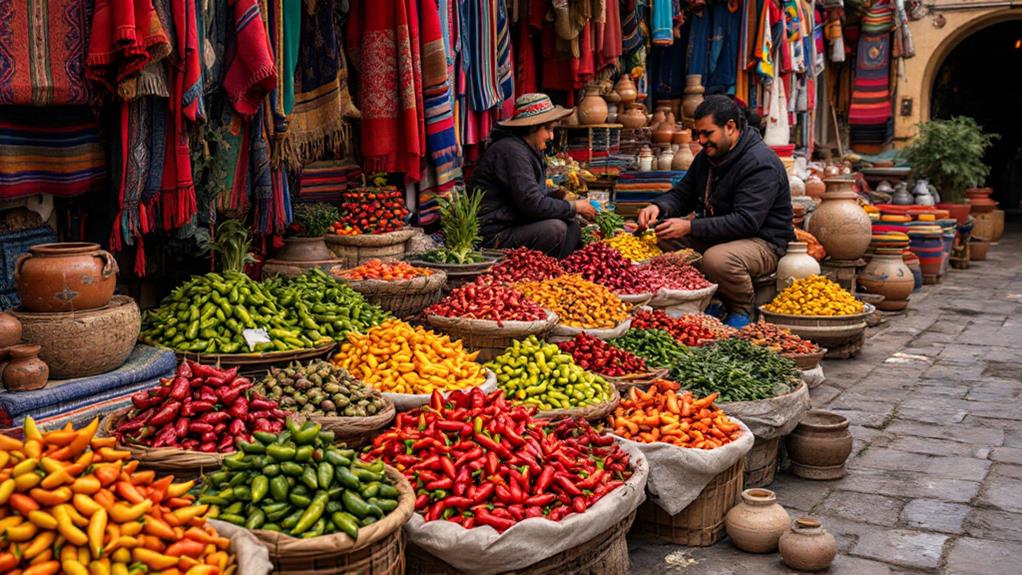
Many cultures celebrate the lively rocoto pepper, but in the Andes, particularly Peru, it holds a unique place of pride. The rocoto isn't just a spicy delight; it's a cornerstone of Andean cuisine that embodies the region's rich agricultural heritage and culinary identity. In Peruvian culture, the traditional dish rocoto relleno stands out, often enjoyed not just for its fiery heat but also its reputation as an aphrodisiac. This dish, along with others featuring rocoto, is a reflection of the pepper's cultural importance.
The rocoto's connection to the Misti volcano symbolizes passion and heat, mirroring the fiery spirit of the Andean people. Harvesting rocoto isn't just a task but a communal event, fostering strong community bonds. These gatherings highlight collective effort and the shared joy in preserving unique flavors that define Peru's gastronomic culture.
Cultivation and trade of rocoto peppers are significant, emphasizing the need to maintain these culinary traditions. As you investigate Peruvian culture, you'll notice how this spicy pepper isn't merely an ingredient, but a lively thread woven into the fabric of Andean life, showcasing its enduring cultural significance.

